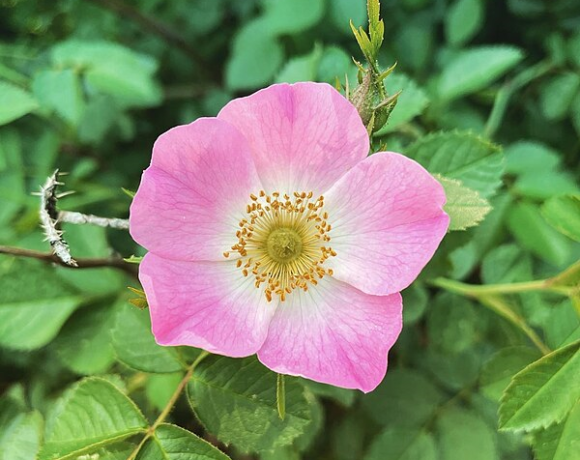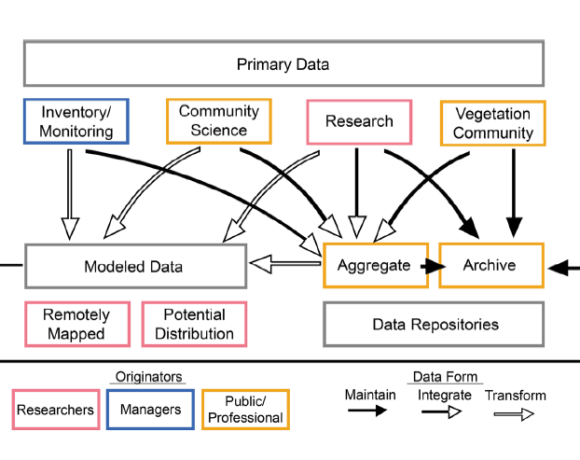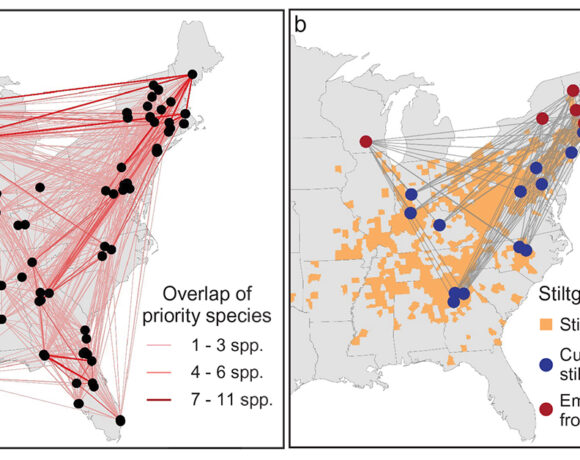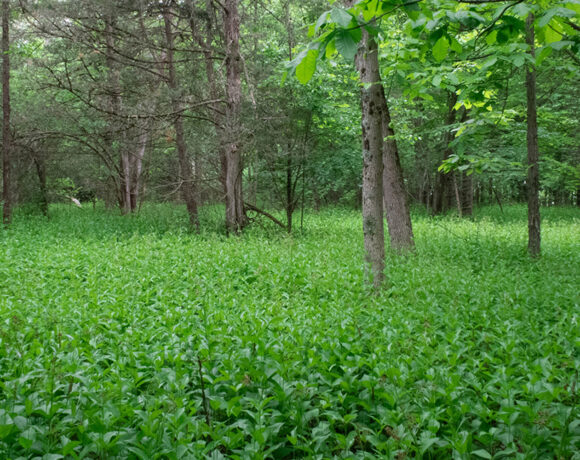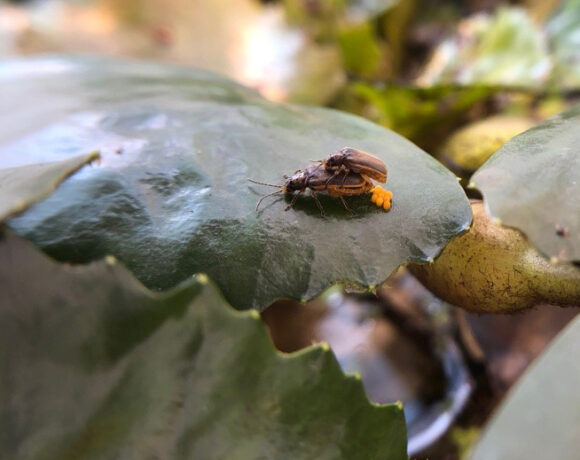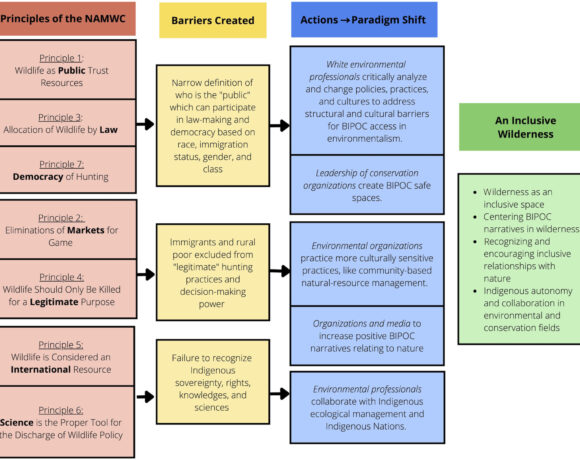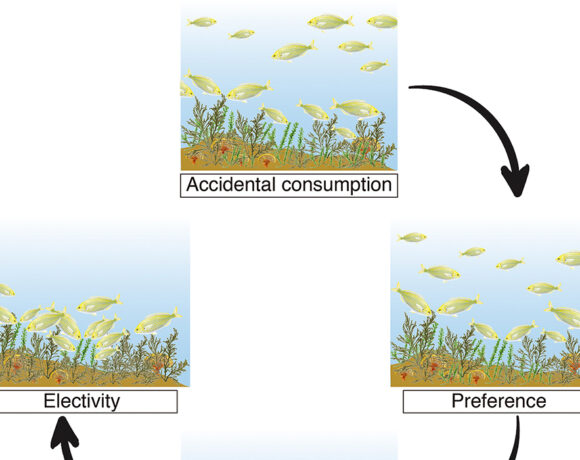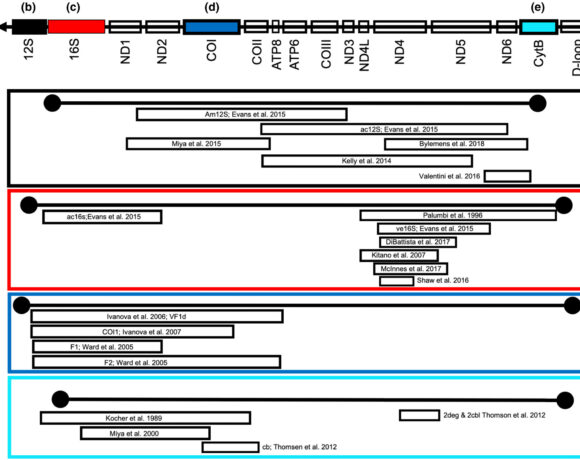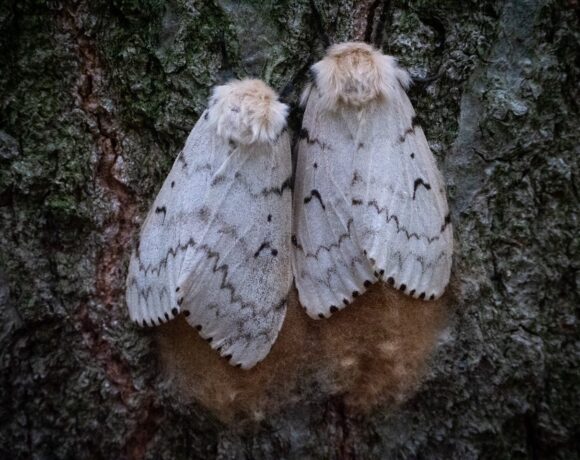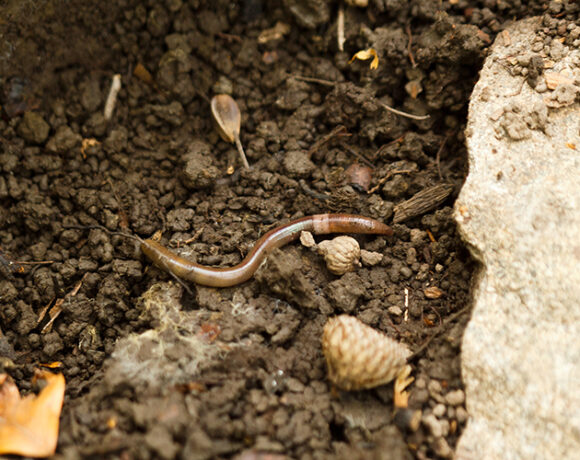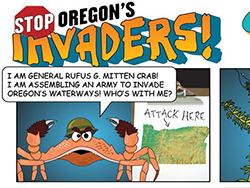Teasing apart invasive worm impacts on native species
Crone, E.R., Sauer, E.L., Herrick, B.M., Drake, D. and Preston, D.L., 2022. Effects of invasive jumping worms (Amynthas spp.) on microhabitat and trophic interactions of native herpetofauna. Biological Invasions, pp.1-14. https://doi.org/10.1007/s10530-022-02781-y
Summary written by Justin Dalaba, edited by Audrey Bowe
Can invasive worms serve as food for native species? How do they alter leaf litter microhabitat? New research offers insight into the potential effects and trophic interactions of jumping worms (Amynthas spp.) and native reptiles and amphibians.
Summary
As a widespread and continually spreading invasive in the eastern U.S., jumping worms (Amynthas spp.) have been known to indirectly impact leaf litter and soil communities, however their role in the food web has not been well documented. In this study, Crone et al. combined mesocosm (enclosed environment) experiments, feeding trials, and field surveys in southern Wisconsin to tease apart some of the complex mechanisms through which invasive worms affect native species.
The study examined: 1) how invasive worms (Amynthas and Lumbricus spp.) interact with American toads (Anaxyrus americanus) within leaf litter microhabitat, 2) how prey-behavioral interactions with American toads compare between Amynthas and alternative prey in the lab, and 3) whether native toads and snakes eat Amynthas in the field. To test the first question, they set up 46 mesocosms at the University of Wisconsin-Madison Arboretum. Mesocosms were composed of predominantly black oak leaf litter (Quercus velutina) and a combination of Amynthas spp. and Lumbricus spp. along with American toad metamorphs. For their second question, they conducted two no-choice feeding trial experiments, offering the toads one live house cricket, one Amynthas worm, or one Lumbricus worm. Lastly, to determine whether American toads and colubrid snakes eat Amynthas worms in the field, they opportunistically captured native predators through visual encounter surveys and from beneath cover boards, then nonlethally recovered their stomach contents. Upon modeling the data, they found that Amynthas alter microhabitat, reduce leaf litter, and affect prey availability for native herpetofauna. Results from laboratory trials and diet surveys indicated that Amynthas are a novel and viable prey source for native herpetofauna, particularly garter snakes, but their unique defensive behavior can make them difficult for toads and other predators to capture.
Key take-aways:
- In experimental trials, Amynthas reduced leaf litter mass, but did not have strong effects soil conditions or American toad survival
- Researchers found novel field evidence of Amynthas consumption by garter snakes, as well as unique anti-predator behavior exhibited by Amynthas worms
- Invasive worms may be more effective at evading prey than other species they compete with, potentially impacting prey availability for native predators
Recommendations:
- Combining experimental and field studies can be a useful approach to tease apart different mechanisms through which invasive species affect native species
- Research to better understand impacts of invasive species, such as Amynthas, on native species helps managers prioritize efforts to protect biodiversity


